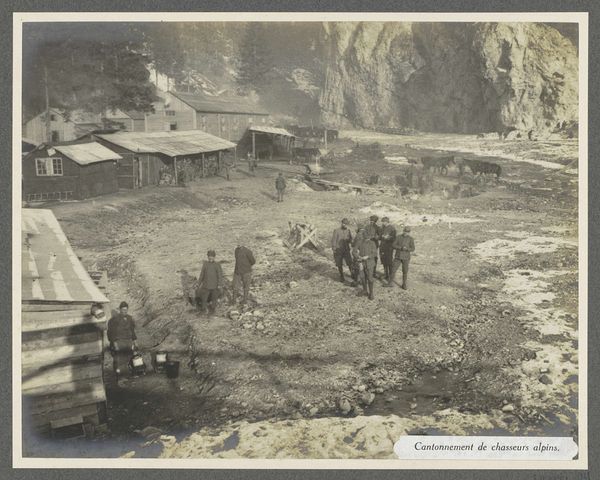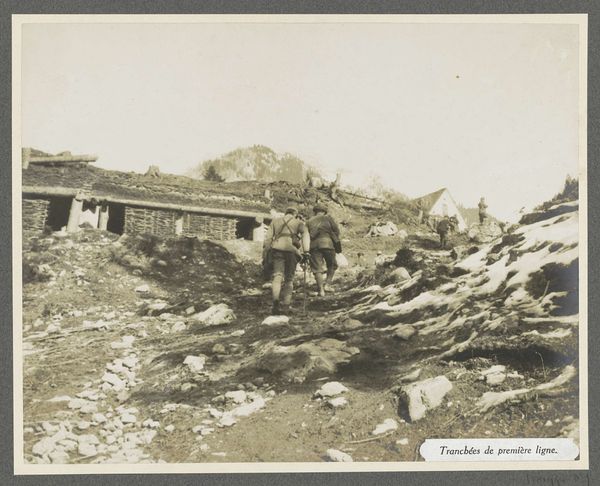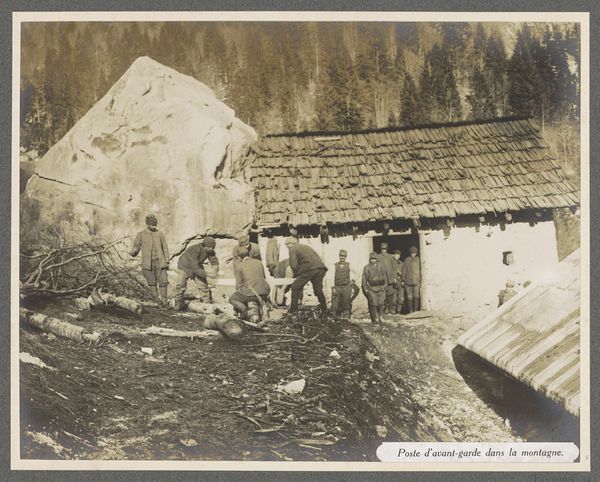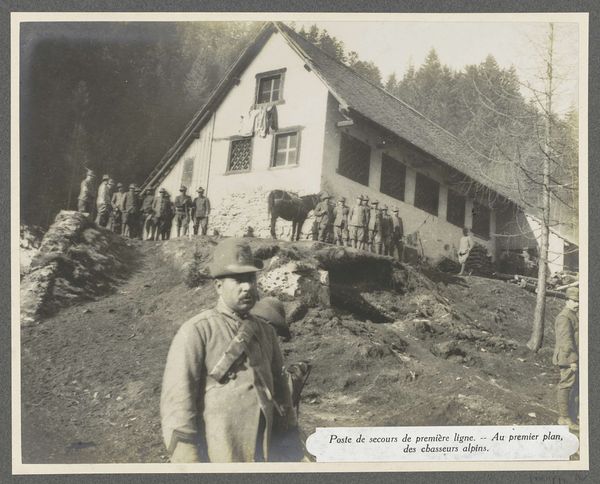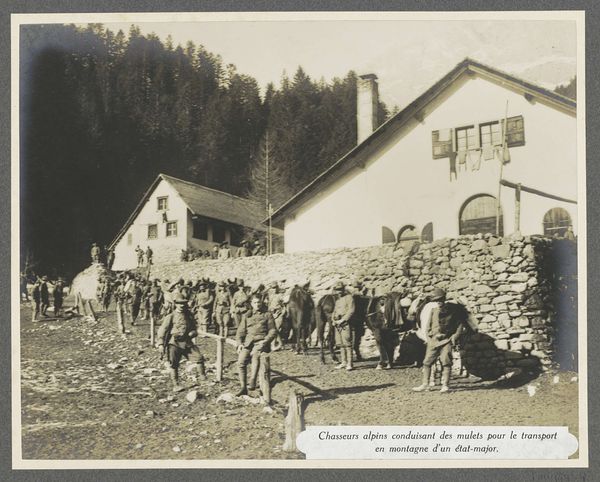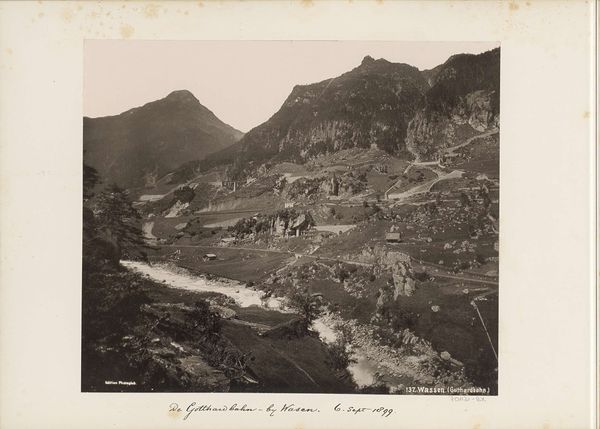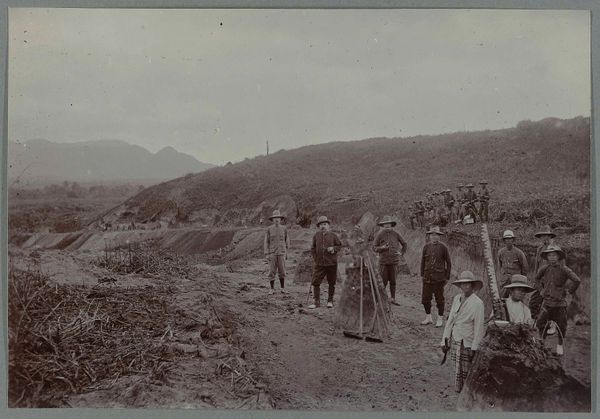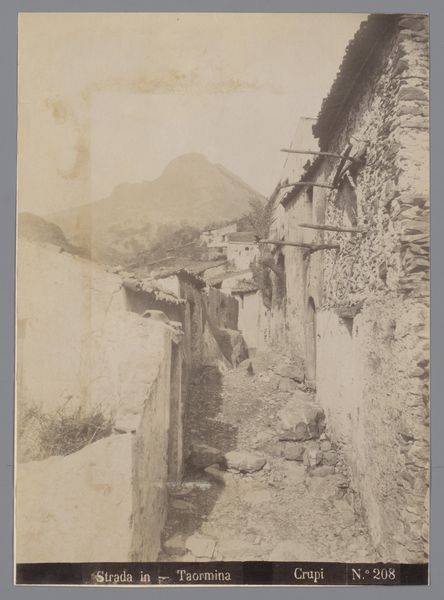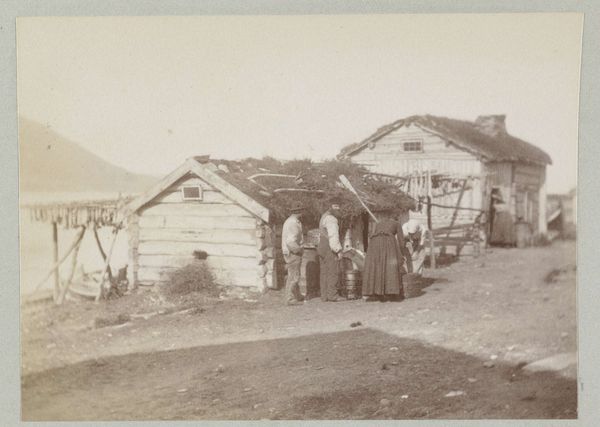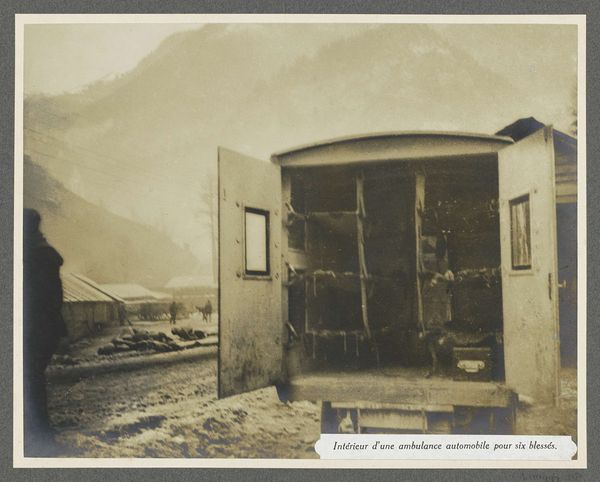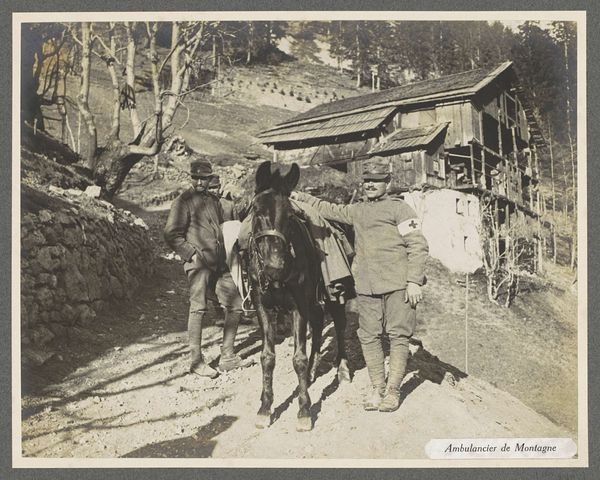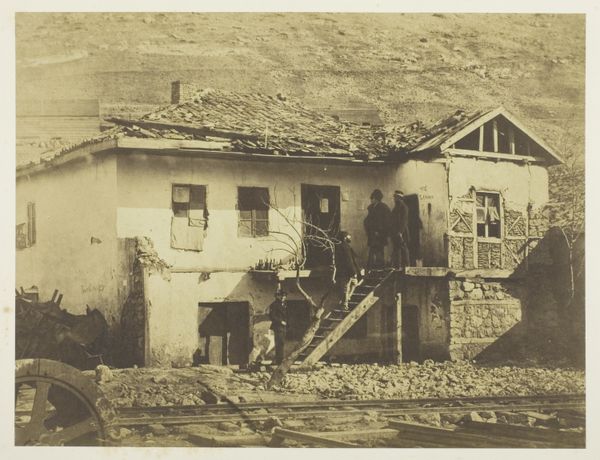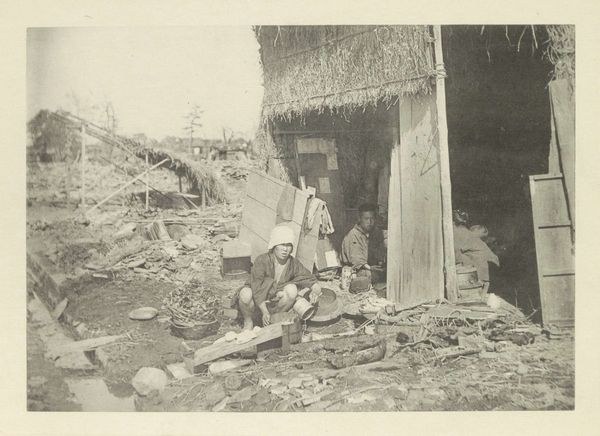
Militairen bij loopgraven aan het front op 1500 meter hoogte in de Dolomieten, vermoedelijk Italianen 1916
0:00
0:00
print, photography, gelatin-silver-print
# print
#
war
#
landscape
#
photography
#
gelatin-silver-print
#
history-painting
#
realism
Dimensions: height 220 mm, width 280 mm
Copyright: Rijks Museum: Open Domain
Curator: This gelatin silver print, created around 1916, is titled "Militairen bij loopgraven aan het front op 1500 meter hoogte in de Dolomieten, vermoedelijk Italianen," or "Soldiers near trenches on the front line at 1500 meters altitude in the Dolomites, presumably Italians." Editor: What strikes me immediately is the overwhelming sense of bleakness. The light is flat, the monochrome palette is almost entirely gray and brown. It feels... airless. Curator: The Great War wasn't just fought on a horizontal plane. We see the theatre of conflict pushed upwards into the unforgiving altitudes of the Dolomite mountains, an under-discussed aspect of this terrible conflict. Editor: Indeed. The arrangement of logs in the lower left, seemingly waiting to be added to the rudimentary shelter we see further up the slope creates a stark geometrical contrast with the chaos of the landscape itself. Curator: It emphasizes the soldiers’ vulnerability. They're attempting to impose order on an environment wholly indifferent to their presence, an uncaring and natural space in the theater of this man-made conflict. The sheer altitude itself introduces new and awful conditions to this already tragic environment. Editor: Notice how the figures ascending the slope become progressively smaller, merging with the indistinct landscape, eventually disappearing into the indistinct grey void of the mountains in the distance. There's a symbolic reduction there, a dissolving of individual identity into the monolithic horror of the war machine. Curator: The text inscribed tells a tale of the specific location of the battlefield. Understanding this piece is aided by considering that in the Italian front in WWI soldiers had to face an elevated, freezing battlefield and the perils it held, as well as the horrors of combat. This reality shifts the conversation around the narratives we see represented from this moment. Editor: I'm struck by how much information is conveyed here through tonality and composition. The diagonal pull of the slope, the regimented logs, the diminishing figures—it all speaks to an overarching sense of attrition and, frankly, despair. Curator: Ultimately, I see it as a testament to the often-unacknowledged battlefronts and challenges faced in elevated, frigid warzones, contributing meaningfully to discussions about historical narratives, challenging perceptions about who was involved in conflicts such as World War I. Editor: I agree. Looking at the overall visual economy in play, I have to admit, this piece carries a potent emotional weight.
Comments
No comments
Be the first to comment and join the conversation on the ultimate creative platform.
